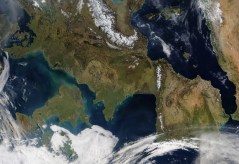The Science Behind Tornados: Defining the Phenomenon
Tornados are one of nature’s most powerful and destructive phenomena. Understanding what a tornado is and how it forms can help us appreciate their complexities and the science behind them. In this article, we will explore the definition of a tornado, its characteristics, formation processes, and the differences between tornados and other weather phenomena.
What is a Tornado?
A tornado is defined as a rapidly rotating column of air that extends from a thunderstorm to the ground. It is characterized by its funnel-shaped cloud that can reach significant speeds, making it capable of causing severe damage over small areas. Tornados typically form during severe thunderstorms when specific atmospheric conditions align, leading to their development.
Characteristics of Tornados
Tornados vary greatly in size, shape, and intensity. They can range from weak dust whirlwinds to extremely violent systems with wind speeds exceeding 200 miles per hour. Tornado strength is measured using the Enhanced Fujita (EF) scale which categorizes them from EF0 (weakest) to EF5 (strongest). The characteristics also include their color; while many appear gray or white due to dust and debris in the air, others can look dark due to storm clouds.
How Do Tornados Form?
The formation of tornados generally requires certain atmospheric conditions such as instability in the atmosphere combined with wind shear—changes in wind speed or direction with height. When warm, moist air at the surface meets cooler air aloft, it creates an environment ripe for thunderstorms known as supercells. These storms have rotating updrafts called mesocyclones that can produce tornadic activity under favorable conditions.
Tornado vs Other Weather Phenomena
While often confused with other weather events such as hurricanes or cyclones, tornados are distinct in several ways. Unlike hurricanes which span hundreds of miles and last for days or weeks, tornados are localized events usually only lasting minutes to an hour but are capable of inflicting extreme damage within that short time frame. Additionally, hurricanes form over warm ocean waters while tornados typically originate from severe thunderstorms on land.
Preparedness for Tornadoes
Understanding what a tornado is enables better preparedness for those living in affected areas. Awareness includes recognizing tornado watches versus warnings—watches indicate potential formation while warnings mean one has been sighted or indicated by radar. Having an emergency plan ready and knowing safe locations like basements or interior rooms away from windows can greatly increase safety during these events.
In conclusion, understanding the definition of a tornado enriches our knowledge about these fascinating yet dangerous natural occurrences. By educating ourselves about their characteristics and formation processes we become better equipped to respond effectively when faced with these powerful storms.
This text was generated using a large language model, and select text has been reviewed and moderated for purposes such as readability.






